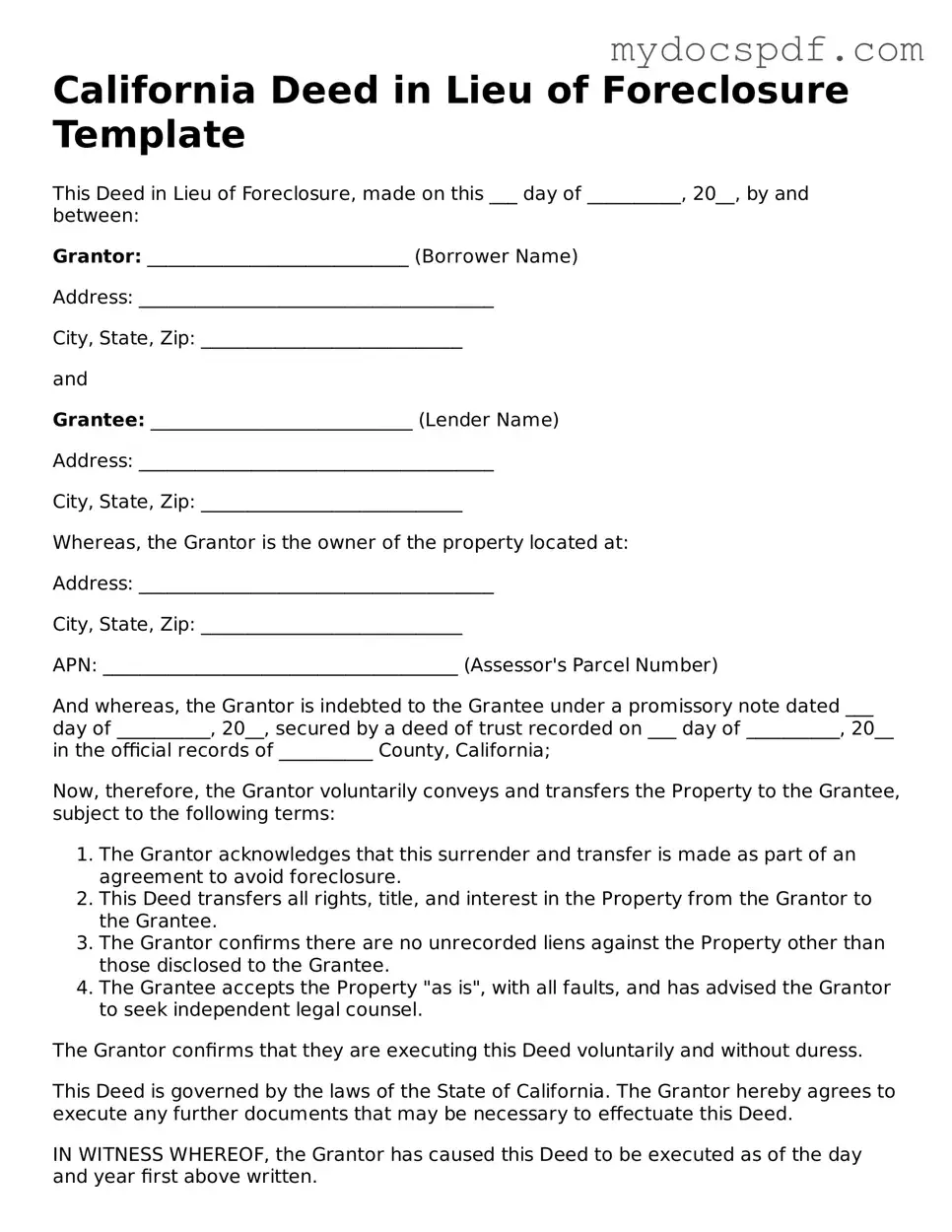California Deed in Lieu of Foreclosure Template
This Deed in Lieu of Foreclosure, made on this ___ day of __________, 20__, by and between:
Grantor: ____________________________ (Borrower Name)
Address: ______________________________________
City, State, Zip: ____________________________
and
Grantee: ____________________________ (Lender Name)
Address: ______________________________________
City, State, Zip: ____________________________
Whereas, the Grantor is the owner of the property located at:
Address: ______________________________________
City, State, Zip: ____________________________
APN: ______________________________________ (Assessor's Parcel Number)
And whereas, the Grantor is indebted to the Grantee under a promissory note dated ___ day of __________, 20__, secured by a deed of trust recorded on ___ day of __________, 20__ in the official records of __________ County, California;
Now, therefore, the Grantor voluntarily conveys and transfers the Property to the Grantee, subject to the following terms:
- The Grantor acknowledges that this surrender and transfer is made as part of an agreement to avoid foreclosure.
- This Deed transfers all rights, title, and interest in the Property from the Grantor to the Grantee.
- The Grantor confirms there are no unrecorded liens against the Property other than those disclosed to the Grantee.
- The Grantee accepts the Property "as is", with all faults, and has advised the Grantor to seek independent legal counsel.
The Grantor confirms that they are executing this Deed voluntarily and without duress.
This Deed is governed by the laws of the State of California. The Grantor hereby agrees to execute any further documents that may be necessary to effectuate this Deed.
IN WITNESS WHEREOF, the Grantor has caused this Deed to be executed as of the day and year first above written.
Grantor: ____________________________
_________________________ (Signature)
Date: _______________________________
Witness:
_________________________ (Witness Name)
_________________________ (Witness Signature)
Date: _______________________________
NOTARY ACKNOWLEDGMENT
State of California
County of ____________________________
On __________, before me, _______________________, Notary Public, personally appeared ___________, who proved to me on the basis of satisfactory evidence to be the person(s) whose name(s) is/are subscribed to the within instrument and acknowledged to me that (he/she/they) executed the same in (his/her/their) authorized capacity(ies), and that by (his/her/their) signature(s) on the instrument the person(s), or the entity upon behalf of which the person(s) acted, executed the instrument.
WITNESS my hand and official seal.
Signature: ___________________________
Notary Public for the State of California
